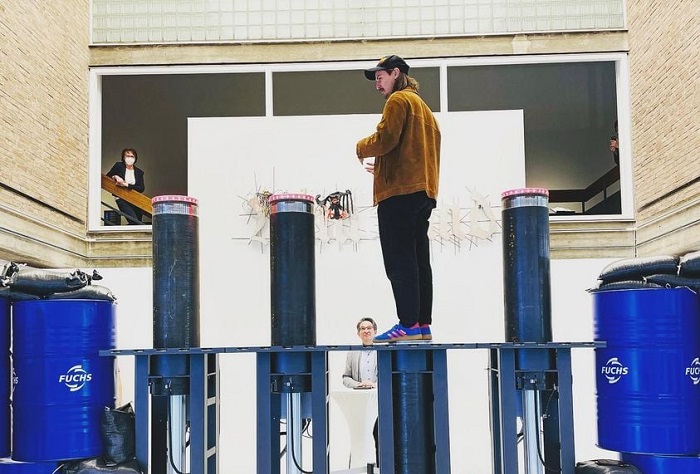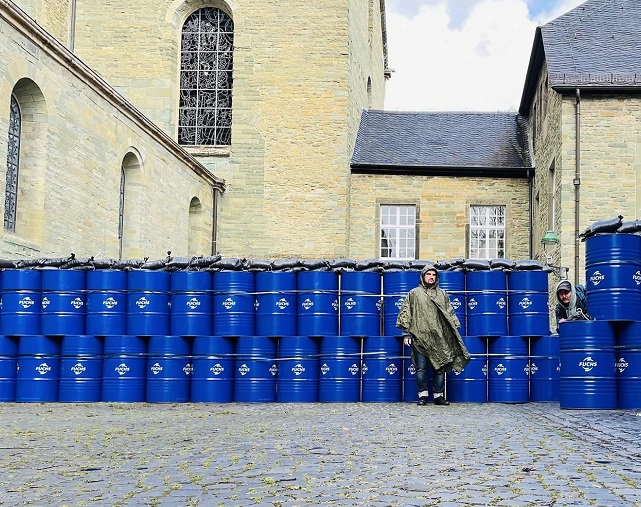Through his art installation inside the Wilhelm Morgner Museum in the German city of Soest, Manaf Halbouni sheds light on forbidden borders, artificial barriers, and cultural and psychological borders between people and nations.
‘Borders’ installation (Between 9 May to 18th July) was inspired by the empty barrels to embody the idea of barriers and borders by placing dozens of them next to each other and placing sandbags on top of them to resemble what is known as a dam. in war conditions.
The Syrian-German sculptor says the purpose of this installation exhibition is to focus on the meaning of fragmentation, and the human endeavor to overcome it, and if the Germans have crossed the Berlin Wall, there are other countries that have not crossed their walls, such as Cyprus and its Green Wall, as well as Gaza Strip that suffers from the Israeli separation wall. Also, like the sharp border that exists between North and South Korea.

Halbouni used in his artistic project 200 empty oil barrels. The project extends over an area of 20 meters and a height of 2 meters with sandbags. He intended to leave the barrels used in the project in their natural blue color with the logo of oil barrels in order to preserve the naturalness and spontaneity of the scene.
He divided the museum, which included the exhibition into two parts, and when the visitor wanted to see what was inside, he had to leave it completely and turn around the wall to enter from the other side.
The installation is a replica of the Green Line in the center of the old town in the Cypriot capital, Nicosia, a demarcation line established by the United Nations Peace Administration to separate the Cypriots from the Turkish part of the island, and this division appeared after the Turkish forces entered northern Cyprus following the 1974 peace process .

Halbouni told Zaman al-Wasl that he was always attached by the borders, barriers and its impact on people, as he did in his previous exhibition, ‘Aleppo Buses.’
Halbouni says that the borders between countries change throughout history and nothing lasts forever, and sometimes a person stands next to a wall and cannot cross it, but he may discover a way through which he turns around the wall and crosses it.
People stand in front of a barrier, but with time they discover that this barrier is just an illusion that inhabits their insides and their thoughts. Halbouni noted that Western and Arab societies alike are currently living in division through an imaginary wall that is not visible in every region and every social class.
By Faris al-Rifai
















Comments About This Article
Please fill the fields below.